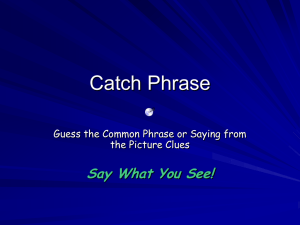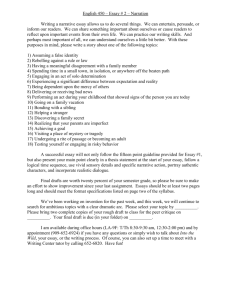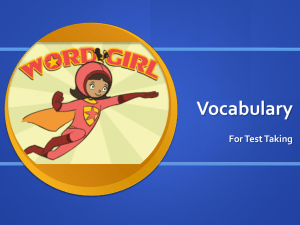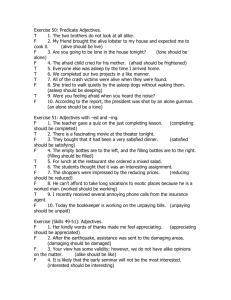Types of Essays
advertisement
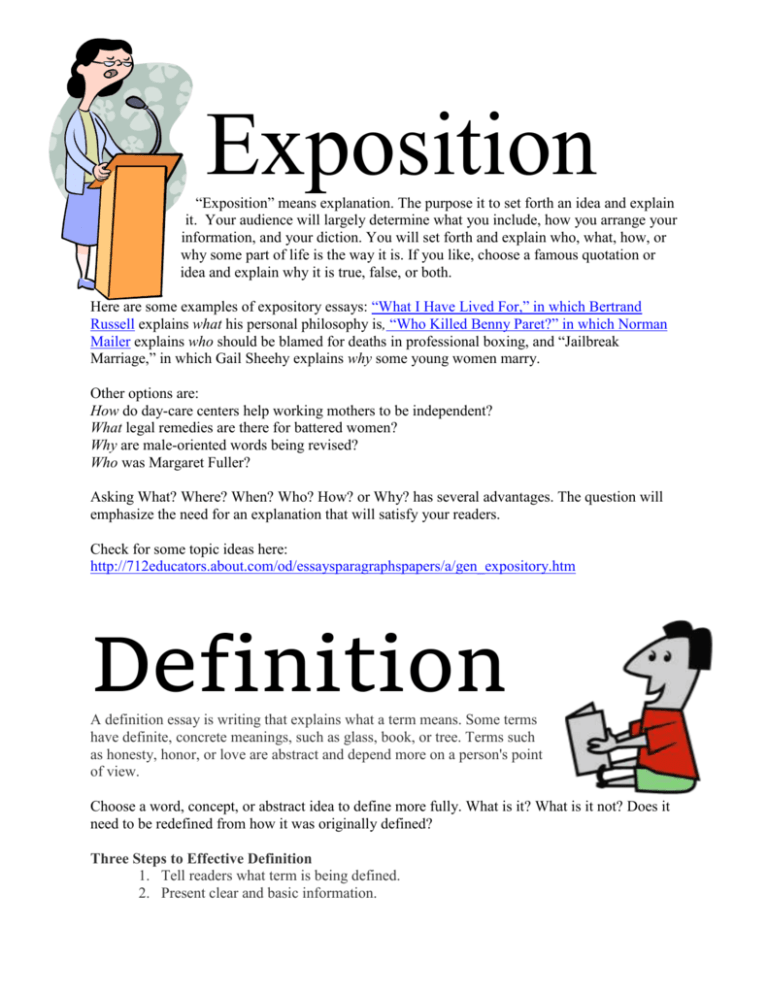
Exposition “Exposition” means explanation. The purpose it to set forth an idea and explain it. Your audience will largely determine what you include, how you arrange your information, and your diction. You will set forth and explain who, what, how, or why some part of life is the way it is. If you like, choose a famous quotation or idea and explain why it is true, false, or both. Here are some examples of expository essays: “What I Have Lived For,” in which Bertrand Russell explains what his personal philosophy is, “Who Killed Benny Paret?” in which Norman Mailer explains who should be blamed for deaths in professional boxing, and “Jailbreak Marriage,” in which Gail Sheehy explains why some young women marry. Other options are: How do day-care centers help working mothers to be independent? What legal remedies are there for battered women? Why are male-oriented words being revised? Who was Margaret Fuller? Asking What? Where? When? Who? How? or Why? has several advantages. The question will emphasize the need for an explanation that will satisfy your readers. Check for some topic ideas here: http://712educators.about.com/od/essaysparagraphspapers/a/gen_expository.htm Definition A definition essay is writing that explains what a term means. Some terms have definite, concrete meanings, such as glass, book, or tree. Terms such as honesty, honor, or love are abstract and depend more on a person's point of view. Choose a word, concept, or abstract idea to define more fully. What is it? What is it not? Does it need to be redefined from how it was originally defined? Three Steps to Effective Definition 1. Tell readers what term is being defined. 2. Present clear and basic information. 3. Use facts, examples, or anecdotes that readers will understand. Here are the examples of popular definition essay topics: Kindness Team Player Sense of Optimism Humor Beauty Love Respect Charisma Ambitions Whatever essay topic you choose, you should be interested in the subject and familiar with it. It would be great if you had your personal experience in the matter you are going to define. (source: http://essayinfo.com/essays/definition_essay.php) Observation In an observation essay you write about things you’ve noticed—a part of the human experience you have some insight into. What pattern do you see in life? About people? About personalities? About society? About nature? It includes an actual observation (or almost a “photograph”) of an object or incident with good sensory details as an example or as a jumping off point. Possible topics: How do people behave in a shopping mall? How does poverty encourage people to commit crimes? How is it more socially acceptable for girls to take on traditionally male roles than the opposite? How are freshmen different than seniors? How do we change our eating habits when we are alone verses when we are with others? How have the shapes of automobiles changed in the last decade? Process How something is done, was done, or should be done. You need LOTS of transitions telling what is done first, next, then, finally, etc. Also be sure to explain why this is important to your reader, which most generally will be me. Why should I care how to do this or how it was done? Start with a personal anecdote or story that gives some meaning to the process. Then move on to what kinds of preparations, cautions, or tools one needs in order to complete the task, as well as an estimate of how long it will take if that is important. Then go through the actual steps. End with something interesting/personal. Maybe some variations on the project would be a suitable ending. Here is a great list of topics to choose from: http://www.surfturk.com/expos/processtopics.html Analysis In this assignment, your purpose is to explain what has given rise to a particular phenomenon. Mostly this is about cause and effect—this does this, which leads to that. It may or may not have a judgment attached such as good or bad. Consider good or bad parts about life, the world, our society, being a teenager, or just about anything else. Think about topics you know about personally or are interested in. Generally they might be: specific teenage behaviors, favoritism by authority figures, poverty, what has caused someone (or a particular group) success in something, divorce rates, or any type of social problem. Start with a basic diagram. These will most likely be your body paragraphs. This causes something Which causes the effect – something about life you want to write about Which causes something else You may do research, but be sure you document it correctly in MLA style with parenthetical documentation. Why there are more male professional sports or athletes than female Why relationships start or break up What causes friction between two roommates, or two friends Sources of pressure on students to get good The fact that more couples are choosing to have only one child, or none The fact that most Americans can communicate in no language other than English grades What causes people to dislike teenagers Source: http://www.wiredprof.com/100h/100assign/causal/causal-assign.htm Argumentation Your reasons why something is true, untrue, good, or bad. Remember to always address the opposing side. Give the reasons you are right, and explain why the opposition is wrong. Close with a caution of what will happens if your reader or the general public doesn’t agree with you, or explain what your readers need to do in order to make the situation better. Here are to good lists of topics: http://www.suite101.com/content/greatpersuasive-speech-topics-a12084 and http://www.personal.kent.edu/~hnsmith/topiclist.htm Division and Classificatio n -Tell what they have in common. Make sure it is something new and interesting that we have not thought about before. Set it up: either talk about one item in each paragraph and how it fits into your thesis, or talk about what the items have in common for two paragraphs and how they differ in one, or talk about how they are different in two paragraphs and how they are alike in one. (i.e. – there are only three kinds of…people, cars, homes, reactions to…, teens, jobs, stores, gifts, games, fear, handwriting, religion, addictions, pizza, shoes) Compare/contrast Tell how two things are similar and different. Possible options for set up: #1 alike #2 alike #3 different, #1 different #2 different #3 alike, #1 how one aspect of the topic is alike and/or possibly different #2 how one aspect of the topic is alike and/or possibly different #3 how one aspect of the topic is alike and/or possibly different.

